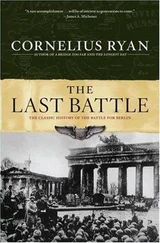Having determined that cooperation with the new order was the better part of valor, Noguès immediately ordered that Daladier and the others not be allowed to board ship for the return passage to Bordeaux until after the crucial July 10 vote. When that balloting was over—and with Pétain confirmed as the new master of unoccupied France and his capital established at Vichy, a resort town about seventy miles northwest of Lyon—Noguès permitted Daladier to take ship for Bordeaux. He was not arrested upon his August 10 arrival, but he was immediately informed that the Vichy government intended to prosecute him—along with Blum, Gamelin, Mandel, Reynaud, former air force minister Guy La Chambre, and former army comptroller general Robert Jacomet—for their “responsibility” for France’s defeat by Germany. It was, of course, a political witch hunt intended to find scapegoats rather than the truth, but Daladier approached the trial as an opportunity to put Pétain and his collaborationist regime under the spotlight.
The trial was to be held in the town of Riom, some twenty miles southwest of Vichy, and the prospective defendants were told to stay in the vicinity. Daladier lodged with various friends in and around Vichy until September 6, when he was taken into custody and placed under house arrest at the Château Chazeron, a medieval castle-turned–country house a few miles outside Riom. He was eventually joined by Blum, Mandel, Reynaud, Gamelin, and the others. The defendants stayed in the drafty, poorly maintained chateau until October 15, 1941, when on the orders of Pétain they were transferred to the Fort du Portalet, an even more austere fortress in the rugged mountains of the Pyrenees near the Spanish border. Three months later Daladier, Blum, Gamelin, Jacomet, and La Chambre were transferred yet again, this time to a dilapidated country house at Bourassol, a few miles south of Riom. Reynaud and Mandel did not accompany the others, for Pétain had decided to withdraw the charges against the two. This did not gain them their freedom, however, for both remained in Vichy’s custody until they were turned over to the Germans.
At Bourassol, Daladier and his codefendants continued preparing their defense. When the trial finally began at Riom’s hurriedly renovated Palace of Justice on the afternoon of February 19, 1942, it must have been something of a relief for the five men to actually be able to answer the charges against them. They were under no illusions, of course, that their defense, however spirited, would actually prevent them from being found guilty. Indeed, four months earlier Pétain had made it perfectly clear how he expected things to go when he publicly announced the defendants’ guilt. The Vichy government intended the Riom Trial, as it became known, to be a blistering indictment of those it loudly proclaimed to be the “men who betrayed France.” And the fact that some two hundred French and foreign journalists would be permitted to observe the trial was a clear indication that Pétain and his supporters also meant the event to be a propaganda victory for Vichy, one in which Daladier and the others could be properly humiliated, discredited, and disgraced.
The details of the Riom Trial—as fascinating and historically important as they are—are outside the scope of this volume. Suffice it to say that things did not go at all as Pétain and his collaborationist government had intended. While Gamelin refused to recognize Vichy’s authority to try him and sat silent throughout the trial, Daladier and Blum mounted what can only be called a brilliant defense. Daladier’s knowledge of the events that transpired between the Popular Front’s electoral victory in 1936 and the French capitulation in 1940 was encyclopedic, and he was able to categorically refute virtually each point made by the poorly prepared and far less articulate prosecutors. And Blum’s eloquence and legal acumen—he was, after all, an extremely skilled lawyer as well as a brilliant politician—allowed him to conduct withering cross-examinations of government witnesses that soon revealed Vichy’s case against the five defendants to be nothing more than a politically motivated sham.
As the trial dragged on, Vichy’s German masters became increasingly frustrated with both the tribunal’s slow pace and the foreign press’s increasingly sympathetic portrayal of the defendants. Hitler himself expressed outrage that the court seemed incapable of shutting Blum and Daladier up, much less proving their culpability for “forcing” Germany to attack France in 1940. In order to avert any further excoriation of the Vichy regime—and, by extension, his own—in the world’s newspapers and to halt what was quickly becoming a public-relations nightmare, Hitler ordered the trial to be halted. On April 14, 1942, the president of the court, Pierre Caous, dutifully announced that the proceedings were to be “temporarily suspended”—after twenty-four public sessions—so that prosecutors could gather “further information.”
The temporary suspension of the Riom Trial lasted until May 21, 1943, when the proceedings were officially terminated. By that time, however, much had changed for both Daladier and France. Operation Torch—the November 8, 1942, British-American invasion of French North Africa—had prompted Hitler to order his forces into unoccupied France. Within days the entire country was firmly under German control, the Vichy regime was reduced to a true puppet government, and the position of Daladier and his fellow Riom defendants had become far more precarious. Though Jacomet and La Chambre were sentenced to continuing house arrest at Bourassol, Heinrich Himmler had ordered Daladier, Blum, and Gamelin moved to “secure locations” in Germany to prevent their “kidnapping” by Allied agents. [58] 11. Daladier, Prison Journal , 193.
The three men began their melancholy journey on March 31, 1943, when they left Bourassol under police guard in a five-car convoy. Their first stop was the small airport in nearby Clermont-Ferrand, where they were joined by labor leader Léon Jouhaux. By April 3 the four were at Paris’s Le Bourget airport, where they and their Gestapo escorts boarded a Luftwaffe transport bound for Mannheim and, ultimately, Frankfurt. From there the Frenchmen and their minders again traveled by road, and just after dawn on April 4 they arrived at their destination: the sprawling Buchenwald concentration camp [59] 12. Buchenwald was built in 1937. Though it was not a designated extermination camp, an estimated fifty-six thousand people died or were executed there before the camp’s April 1945 liberation by elements of the U.S. 6th Armored Division.
near Weimar.
Compared with the horrific conditions endured by most of Buchenwald’s inmates, Daladier and the other French VIP prisoners lived in relative comfort. They were assigned individual rooms within the SS compound, which was separated from the main camp and surrounded by pine trees. [60] 13. For additional details on Daladier’s time in Buchenwald, see both Daladier, Prison Journal , and Léon-Jouhaux, Prison pour hommes d’Etat .
Though the windows in their rooms were barred and their doors locked at night from the outside, the Frenchmen were well fed, were allowed to walk around the compound’s fenced perimeter (with guards, of course), and could write and receive letters. Perhaps just as important for these gregarious and once-powerful men, they were allowed to gather for a few hours each evening after dinner to share a bottle of German-provided cognac, smoke hand-rolled cigarettes of cheap Croatian tobacco, and dissect—often heatedly—the causes of their nation’s defeat.
Daladier’s sojourn at Buchenwald did not last long. On April 29 the camp’s commandant, Hermann Pister, told Daladier that he, Gamelin, and Jouhaux were to be transferred the following day to a “special facility” in the northern Tyrol, not far from Innsbruck. Ominously, Léon Blum would not accompany them; as a Jew, he was destined for “special detention,” Pister said. So, too, was Georges Mandel, who was to arrive at Buchenwald within a few days. Daladier was deeply troubled that his friend would be staying behind at the concentration camp, but Blum himself made light of it, saying that he and Mandel would “turn the place into a ghetto.” [61] 14. Daladier, Prison Journal , 199. The two men were to have very different fates. Blum spent the remainder of the war in Buchenwald and, briefly, Dachau, and was liberated by Allied troops in May 1945. He returned to politics and was briefly prime minister in 1946–1947. He died in 1950. Mandel, sadly, did not survive the war. He was executed in Paris in July 1944 by the French fascist paramilitary force known as the Milice.
Читать дальше












